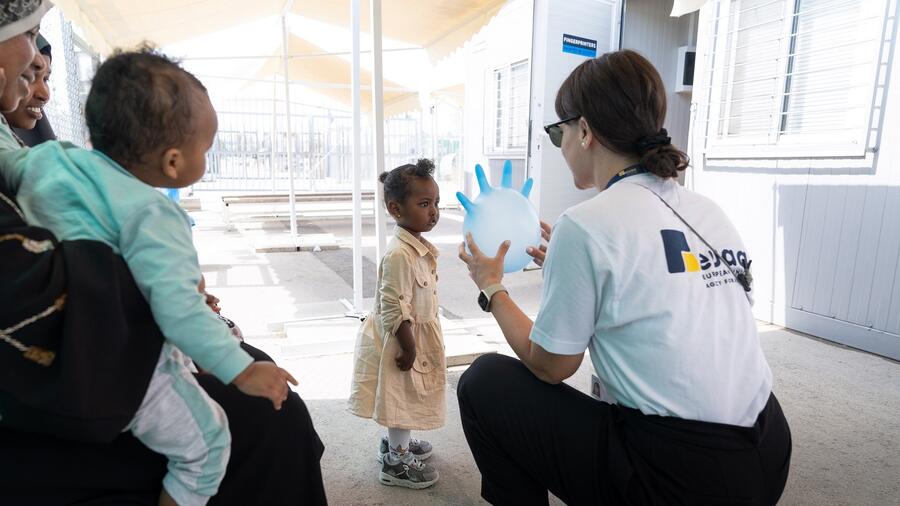News
News Published: 1 July 2024
Asylum applications in April down by almost one-third, compared to the peak of autumn 2023

The European Union Agency for Asylum (EUAA) has released an updated analysis showing that EU+ countries continue to receive fewer applications for asylum, compared to the seven-year peak of last autumn. In contrast, the number of cases pending at first instance in the EU+ reached levels not seen since the migration crisis of 2015-2016.
During the winter months of 2023-2024, there has been a general decline in the number of asylum applications received by EU+ countries. This trend continued in April 2024, with only 86 000 applications received by national asylum authorities. This is a notable decrease (-30%) when compared to the recent peak of 123 000 applications in October 2023.
In April, Syrians (12 000) lodged slightly more applications, compared to the previous month, though the number is down by a significant margin compared to the seven-year peak in the autumn.
The overall decrease in applications, however, has not been the case across all Member States. Following a surge of arrivals in the Canary Islands there was a commensurate increase in the number of asylum applications lodged by several citizenships, including Malian nationals. At the same time, applications in Italy remained just below the record high of March 2024. Overall, these trends contributed to the largest caseload at first instance, in seven years at an EU level.
Persistent strain on most national systems, from both asylum seekers and beneficiaries of temporary protection
In April 2024, Germany (19 000 applications) remained the top destination for asylum seekers in the EU+, receiving nearly a quarter (23 %) of the total. Spain (16 000) followed with 18 % of applications, and Italy received a near-record high of 14 000 (17% of the EU+ total).
Although Germany has traditionally led in receiving asylum applications, it has seen a decline in recent months, while Italy has experienced a surge. The main receiving countries also differ in the origins of applicants: in Germany, over half comprised Syrians, Afghans and Turks; in Spain, more than two-thirds were Venezuelans, Colombians, and Malians; and in Italy, 40% were Bangladeshis, Peruvians, and Egyptians.
The Spanish asylum system was affected by several developments: first, there has been a well-documented surge of boat arrivals in the Canary Islands with commensurate increases in the number of asylum applications being lodged in the first few months of 2024. For example, in April 2024, Malians lodged 2,200 applications for asylum, which is which is the most on record and up five-fold compared to a year earlier. Senegalese lodged 1,200 applications which is up three-fold over the same period. Secondly, many Venezuelans and Colombians have, for some time, been seeking protection for the most part in Spain. These Latin American nationals, who enjoy visa-free access to the Schengen area, continued to submit significant numbers of applications in the EU+ in April 2024: 6,200 Venezuelan applications and 4,800 Colombian.
The number of applications is not always the most representative measure of pressure on EU+ countries, as they have different sized asylum and reception systems. In April 2024, the number of applications in Cyprus (1 500), with its small population size of around 921,000, amounted to 1 application for every 600 inhabitants, the most per capita across EU+ countries. Italy (14 000) and, neighbouring Austria (2 200), while receiving very different numbers of applications per se, actually received very similar numbers per capita: about 1 application for 4 100 inhabitants.

